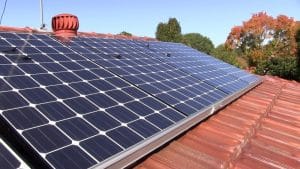Acknowledging the sector’s vast potential, Adani is planning to expand its solar PV modules and cells manufacturing facility to 2 GW, CEO, Adani Green Energy Ltd, Jayant Parimal told pv magazine in an exclusive interview.

Currently, the Gujarat-based renewable firm has 1.2 GW operational module and cells manufacturing capacity at its Mundra Solar PV Ltd (MSPVL) factory, located in one of the world’s largest Special Economic Zone at Mundra, Gujarat, India.
Parimal said: “In the factory that we have set up, there we are manufacturing multicrystalline predominantly, 200 MW mono-PERC, and 100 MW of bifacial. Now, we are now upgrading our facilities to multi-PERC as well, with a little increase in our mono facilities. And we may venture in wafer manufacturing, too.”
Adani’s solar PV installation portfolio is one of India’s largest. The company has installed around 2 GW across the nation aincluding one of the world’s largest solar power plants: a 648 MW (780 MWp) installation at Kamuthi in Tamil Nadu.
However, Parimal stressed: ” It is the world’s largest solar plant by a single entity; it is not a solar park, of which there are obviously bigger examples around the world.”
Parimal also mentioned that due to the low bidding in 2017 and upcoming uncertainties of duties, Adani would not be signing any PPAs in 2018 just yet.
The company is venturing into new innovative solutions for improving its plant performances in order to improve its financial results. Parimal said: “We are installing smart inverter solutions for better monitoring and control, and we are also trying thermal imaging through drones, and innovative water-less robotic cleaning solutions.”
Adani also has plans to grab a slice of India’s growing floating solar pie. Last December, the Solar Energy Corporation of India (SECI) published a 10 GW floating solar tender, which aims to boost this underdeveloped portion of the nation’s solar industry over the next three years.
“This is a field we haven’t explored,” says Parimal, adding, “we will bid aggressively to win, with an idea of learning and exploring the sector.”
He goes on to say that floating solar currently costs six times more than ground-mounted systems, chiefly due to the fact that the current floating beds used widely in India are comprised of Ferrocement floaters.
Depending on the project, floating solar costs around US$0.15/Wp, says Parimal, compared to ground-mounted systems, which cost on average $0.025/Wp.
Adani representatives have visited a number of floating solar plants in Asia in order to familiarize themselves with the technology, he concluded.




























